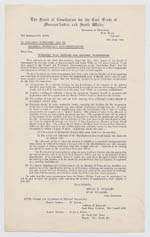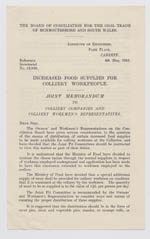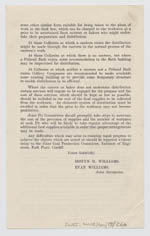Co-operative Societies
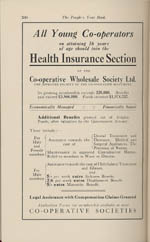

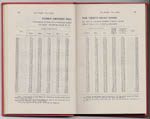
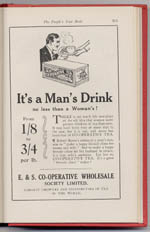
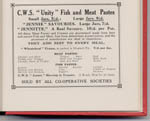
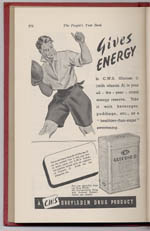
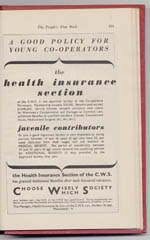
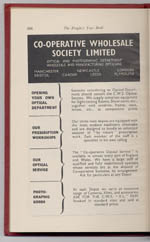
The first retail co-operative was founded in Rochdale in 1844, and by 1872 there were several hundred ‘co-ops’, enough to form the Co-operative Wholesale Society. The Wholesale Society operated by bulk purchasing food for members to buy in their stores. The food was to be reasonably priced, and unadulterated. The Society issued ‘dividends’ to members based on the value of goods they had purchased. It was also possible for members to buy items on credit, which could assist in times of financial hardship. As well as general food stores, the Society opened specialist retail food outlets such as bakeries, butchers, and dairies. They also provided a milk delivery service. In addition to food retail, they branched out during the twentieth-century into areas such as furniture, clothing, and chemists. Local arrangements were often made with other businesses, such as opticians, for Co-operative Societies members to have discounted rates. The Society provided some of its own goods by purchasing and operating factories, farms and dairies. It also developed its own health insurance scheme, with provision for dental treatments, eye-tests and spectacles, maternity, and sickness benefits. In south Wales, Society members could apply to the Western Co-operative Convalescent Fund for benefits and ‘tickets’ to local convalescent homes. District Co-operative Societies also contributed financially to hospitals and nursing associations in their area, for the benefit of their members.
Useful Links
http://www.co-op.co.uk
http://museum.co-op.ac.uk
|
|
Milk

Most industrial areas received their fresh milk supplies via companies who had contracts with local dairy farmers. The milk and the farms were subject to quality and hygiene inspections. In 1901, the Sale of Milk Regulations legally defined and enforced a minimum level of fat in milk, to control adulteration by ‘watering down’. Milk was also tested by local authority laboratories for bovine tuberculosis. Pasteurisation, or heat-sterilisation, of milk was thought to remove the threat of tuberculosis. The link between milk and the transmission of bovine tuberculosis to humans was the cause of much debate. Robert Koch was one of many who challenged this view, in a 1901 public speech. Milk bottles, which began to appear by 1900, were only used for pasteurised milk.
Methods of preserving milk included dried-milk powder, and tinned condensed milk. Although cheaper than fresh milk, it was made from evaporated skimmed milk and was not as nutritious. Between the First and second World Wars, an increasing number of children received either free or subsidised fresh milk at school. Schemes initiated under the 1906 Education (Provision of Meals) Act, and the National Milk Publicity Council (1923) meant that by the early 1930s, approximately 90,000 elementary school children were receiving free milk and around 80,000 were paying a penny a bottle. In 1934, a Government ‘Milk in Schools’ scheme was initiated by the Milk Marketing Board, with the aim of supplying a third of a pint of milk daily to 50% of elementary school children, either at half cost or free. This figure was achieved by 1939. Subsequently, the 1946 Education Act provided free milk for all school-children.
Further Reading
Atkins, P.J., ‘The pasteurisation of England: the science, culture and health implications of milk processing,
1900-1950’, Smith, David F. and Jim Phillips (eds.), Food, Science, Policy and Regulation in the Twentieth Century: International and comparative perspectives, (London and New York: Routledge, 2000), pp.37-51
Burnett, John, Plenty and Want: A social history of food in England from 1815 to the present
day, (London: Routledge, 1989).
Harris, Bernard, The Origins of the British Welfare State: Social Welfare in England and
Wales, 1800-1945, (Basingstoke: Palgrave Macmillan, 2004)
McKee, Francis, ‘The popularisation of milk as a beverage during the
1930s’, in Smith, David F. (ed.), Nutrition in Britain: Science, scientists and politics in the twentieth
century, (London and New York: Routledge, 1997)
Webster, Charles, ‘Government Policy on School Meals and Welfare Foods, 1939-70’, in Smith, David F. (ed.),
Nutrition in Britain: Science, scientists and politics in the twentieth
century, (London and New York: Routledge, 1997), pp.190-213
|
|
Soup Kitchens
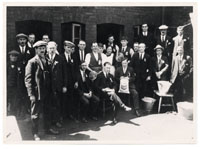
Soup kitchens were set up during periods of high unemployment, and industrial unrest, to feed the men and their families whilst they had no income and would otherwise have gone hungry. During the 1926 General Strike, many soup kitchens and canteens were opened to feed striking and unemployed workers, and their families. They were organised and run by local organisations and volunteers. Housed in local buildings such as Welfare Institutions and Chapel Halls, they provided regular daily meals (usually 2 or 3 per day), which were cooked on the premises by volunteers. Tickets were issued, and registers kept, of people receiving the meals, so that only those who were entitled received them. Children would be fed at the soup kitchens, if they were not already receiving meals at school.
Food supplies were donated or sold at low prices by local shopkeepers, Co-operative Societies, and other supporters. Financial assistance came from trade unions, and other groups and individuals. The food was usually of a basic, but nutritious nature, such as stews and soups, and provisions included items such as meat, vegetables, bread, cheese, and tea. At least one meal a day would be hot, whilst others might consist of sandwiches and tea. Malnutrition and undernourishment were not uncommon in the inter-war years, in poor industrial areas, and some people ate better at the soup kitchens than they would usually have done.
|
|
|
Further Reading:
Burnett, John, Plenty
and Want: A social history of food in
England
from 1815 to the present day,
(London: Routledge, 1989).
Smith, David (ed.), Nutrition
in
Britain
: Science, Scientists and Politics in
the Twentieth Century, (London: Routledge, 1996).
Smith, David and Phillips, Jim (eds.), Food, Science, Policy and Regulation in the Twentieth Century:
International and Comparative Perspectives, (
London
: Routledge, 2000)
|
|














